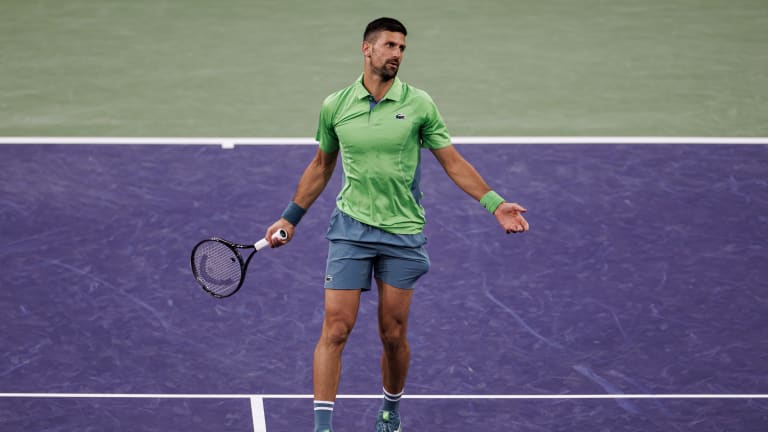Sunshine Swing in Review
What can we learn from the efforts of both the ATP's young and old guard in the Sunshine Swing?
By Apr 01, 2024Sunshine Swing in Review
The WTA's Sunshine Swing proved that slight shifts can bring results, and that opportunity still knocks
By Apr 01, 2024Opinion
Carlos Alcaraz moved up with Juan Carlos Ferrero—now, he moves on without him
By Dec 17, 2025Top 5 Stats of the Year
Stat of the Year, No. 3: Novak Djokovic, serving up titles for 20 years and counting
By Dec 17, 2025Coach's Corner
Carlos Alcaraz announces shock split from longtime coach Juan Carlos Ferrero
By Dec 17, 2025Next Gen ATP Finals
The 2025 Next Gen ATP Finals: The field, fun facts and where to watch
By Dec 16, 2025Top 5 Stats of the Year
Stat of the Year, No. 4: Aryna Sabalenka wins 19 tie-breaks in a row, a new women’s record
By Dec 16, 2025News
The ATP is adding a heat rule like the one the women have had for more than 30 years
By Dec 15, 20252025 Year In Review
Aryna Sabalenka becomes seventh player to repeat as WTA Player of the Year
By Dec 15, 2025Ranking Reaction
Carlos Alcaraz kicks off milestone 50th career week at No. 1 on ATP rankings
By Dec 15, 2025What can we learn from the efforts of both the ATP's young and old guard in the Sunshine Swing?
The future of the game is taking shape, in more ways than one.
Published Apr 01, 2024
Advertising
Advertising

Djokovic's return to the Sunshine Swing was cut short in a shock third-round Indian Wells loss; he withdrew from Miami.
© © TENNIS PHOTO NETWORK